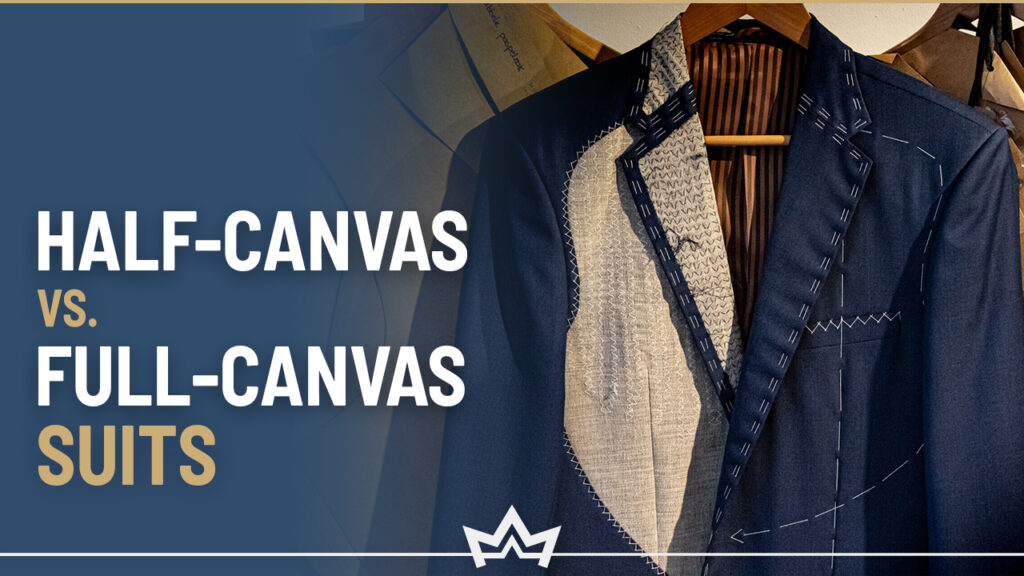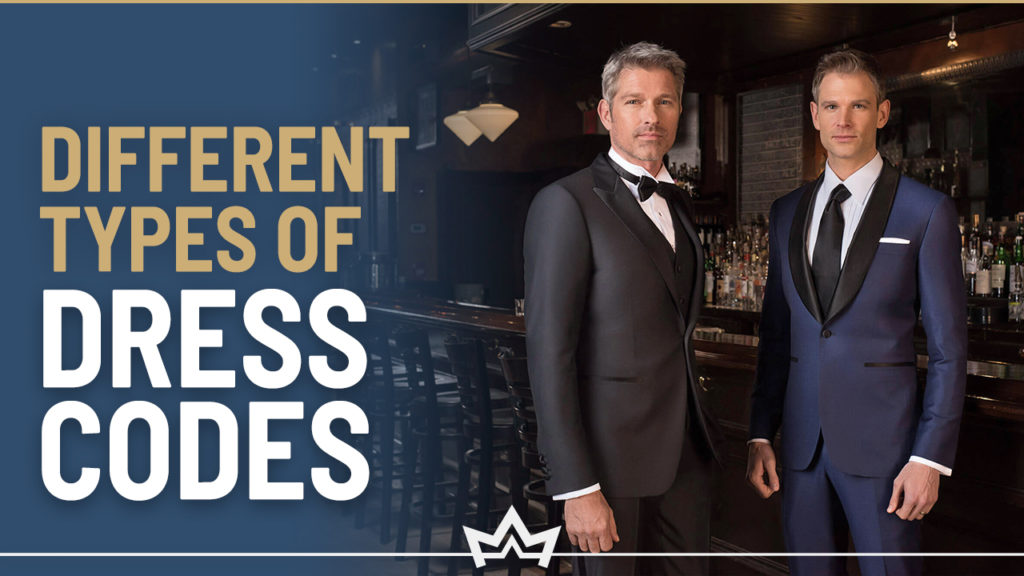Half canvas or full canvas suit is one of the many questions gentlemen encounter exploring high-quality suits and bespoke tailoring.
Besides the obvious price difference, some details can make you choose one over the other.
I dedicate this article to all such particulars. So you know which suit canvas to choose and what suits your style.
What is Suit Canvassing?
The suit canvas is the framework for the construction of the suit jacket.

Consider the suit jacket as a two-layer fabric; the outer visible one and the inner one facing the body.
Between these two is an interlining made of horsehair blended with wool or cotton.
This interlining is called a suit canvas. It has a somewhat stiff drape and adds a third dimension to the jacket fabric.
There are also little stitches, sewn by hand or machine, that hold the canvas to the exterior fabric.
Canvas, over time, becomes attuned to the wearer’s body. As a result, the suit fits better.
That’s because there’s a constant movement between the exterior fabric and the canvas stitches.
The made-to-measure and bespoke world has two canvas configurations; a half canvas and a full canvas.

In addition to the difference in construction, both have advantages and flaws.
The Half Canvas Suit Construction
The half canvas suit is the less expensive construction for a tailored suit.
It has the canvas in the upper part of the jacket while the rest is fused. We’ll get to that later.
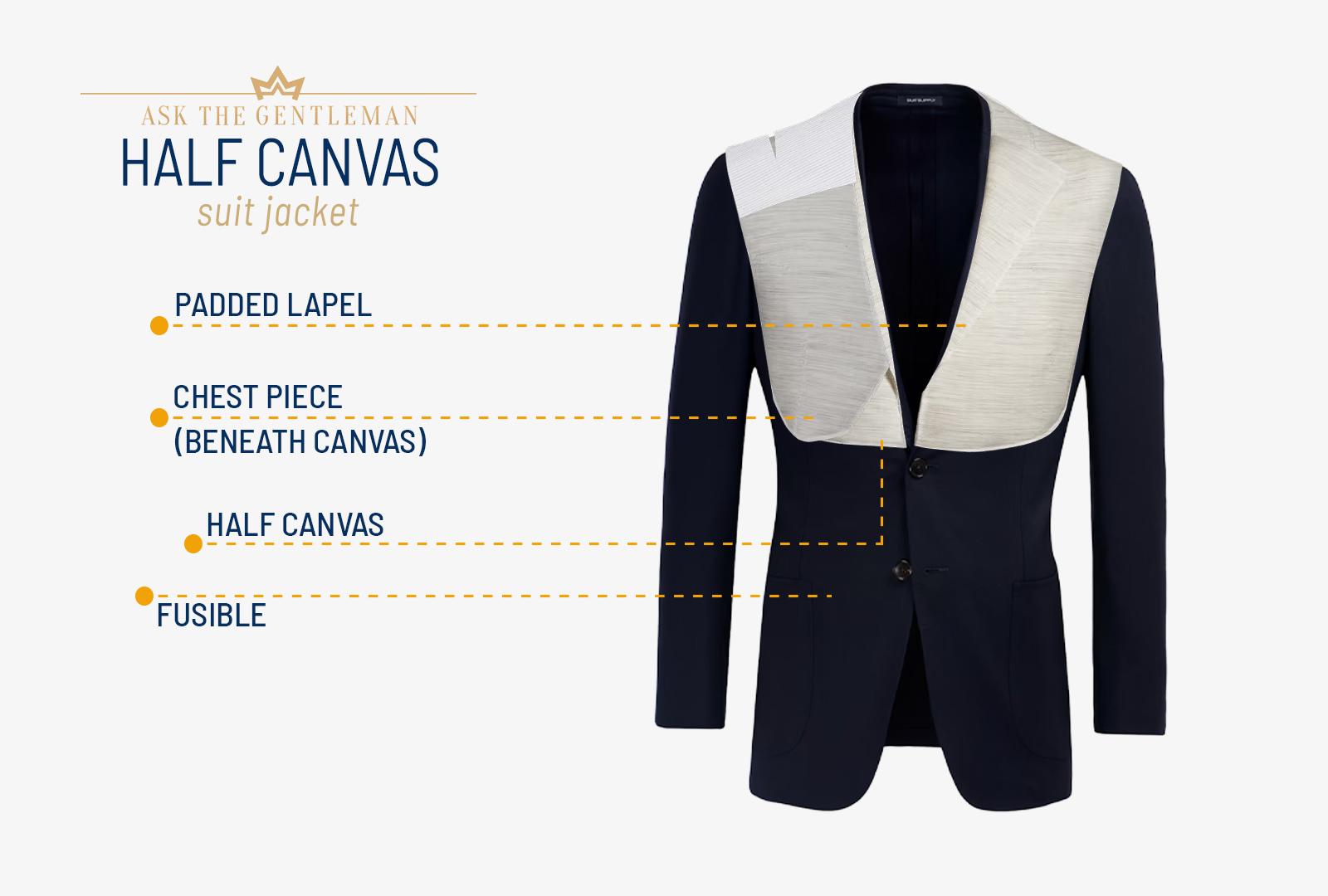
Sometimes the canvas is in two-thirds of the jacket, which also counts as a half canvas suit.
The canvas runs behind the shoulder seam to the top of the lapels. It also covers the chest to the jacket’s waist.
This provides a jacket with somewhat elegant sartorial symbols.
It drapes well, has a nice lapel roll, and doesn’t have an overly structured jacket in the bottom half.
Half canvas suits are also breathable and last longer. And you get most of the benefits by saving a good chunk of money compared to the full canvas.
Half-canvas construction is usually the go-to for most business suits and wedding attire.

It is perfect for a structured and naturally draping suit without breaking the bank.
But there are some drawbacks too.
For example, the jacket can feel a little stiff at the bottom. Also, you can’t expect the suit to last 10 or 20 years.
Full Canvas Suit Construction
A full canvas suit construction is the epitome of tailoring excellence.

The canvas covers the whole jacket, from the hem to the chest, lapels, shoulders, and everything in between.
This canvassing adds weight and an impeccable structure to the jacket.
And when a person wears the suit, it gives the utmost sense of luxury.
Over time, a full canvas suit takes the form of the wearer’s body and looks even better.
In addition, there are plenty of other reasons to invest in a full canvas suit.
Full canvas suits can last a lifetime with the right fit and suit fabric.
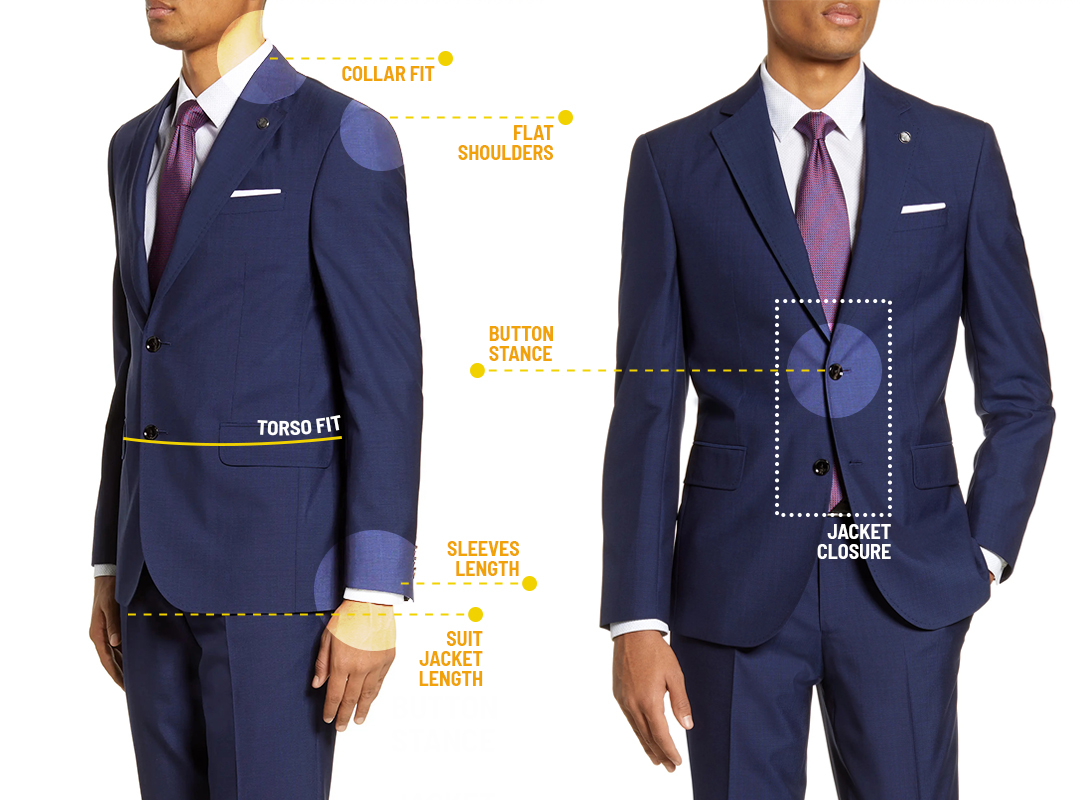
For example, it can lower the stiffness of the jacket.
Similarly, a full canvas suit is quite breathable. So, your jacket will be going to last longer and will better tolerate wear and tear.
But a few things keep people from investing in a full canvas suit.
The most obvious one is the price. It’s hard to convince men to spend a fortune on a suit when they only wear it occasionally.
Full canvas suits are expensive not just because of the material but mostly because of the labor required to make them.
It involves hand sewing technique which takes a lot of time and requires a skilled craftsman.
How Canvassing Affects the Suit Jacket Lapels?
The canvas provides flexibility and structure to the lapels.
What this means is that the lapels roll nicely against the jacket. So even when you try to unfold and leave, the lapels return to their original place.
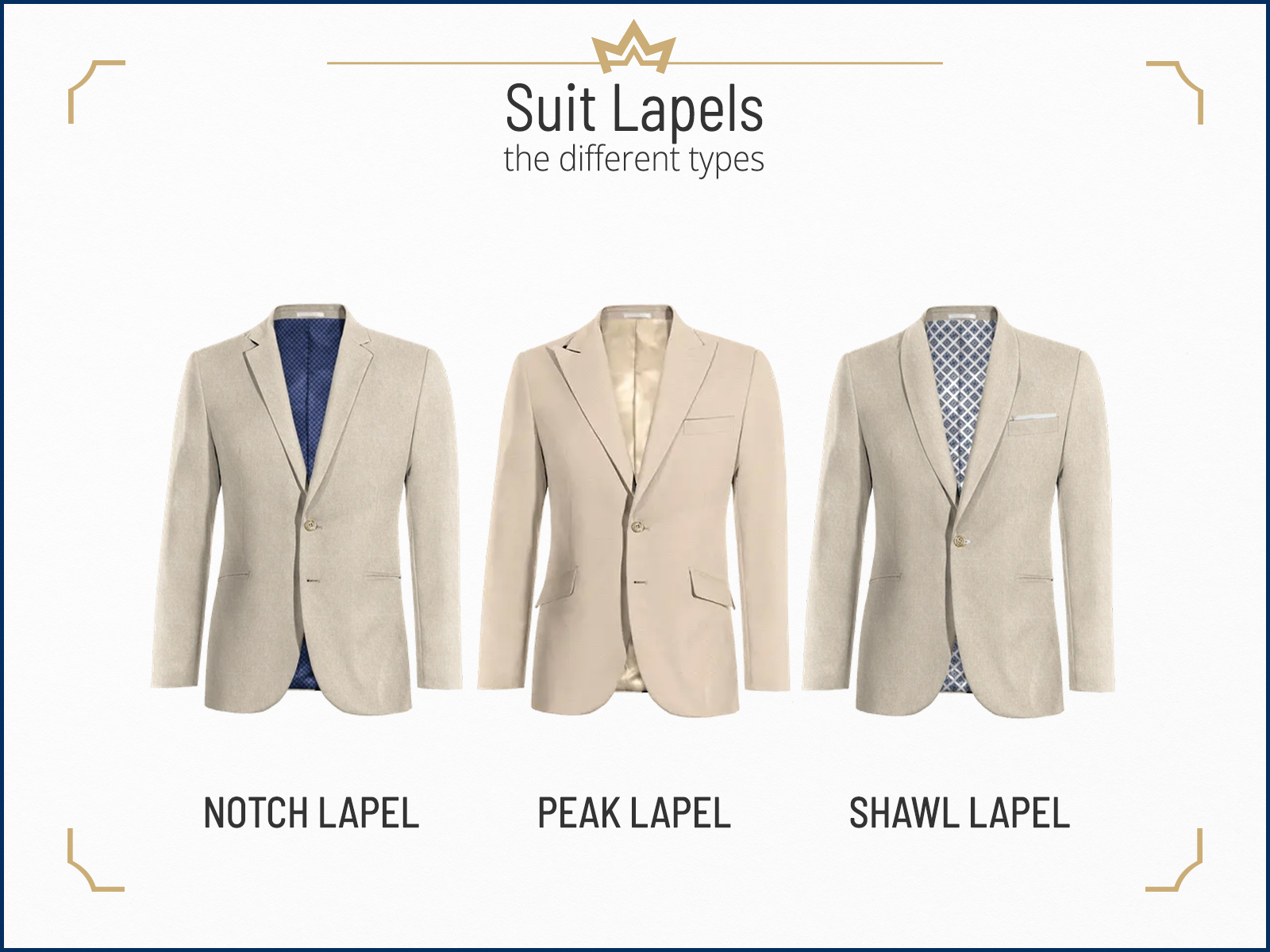
This naturally occurring lapel also creates a belly or a small gap between the suit jacket and lapel.
To the eye, this gap provides depth perception and is one of the hallmarks of high-quality jackets.
For comparison, the lapels appear pressed against the jacket on a fused or low-quality jacket.
What Are the Benefits of Having Your Suit Canvassed?
The first benefit is the better structure of the jacket. This accounts for the suit looking natural and eventually more charismatic.

Next comes the drape. A canvassed suit will follow the natural contours of your body, and stiffness will help you achieve a masculine physique.
The suit jacket would be fitting well, wrapping smoothly onto the body.
Additionally, the jacket movements are smooth due to loose stitching.
Canvassing protects the suit jacket from ripples and bubbles after the dry cleaning.
However, the biggest benefit of suit canvassing is that it makes the suit last longer by decreasing the tension in areas like shoulders and arms.
Most of the time, the fabric will wear out before the canvas gets damaged.
How to Check if Your Suit is Canvassed?
Look, feel and move are the three principles to check for the suit canvas.
First, you can appreciate a well-structured jacket by merely looking at it.
Pay attention to the lapel roll, as it pops out and never appears glued in a canvassed suit.
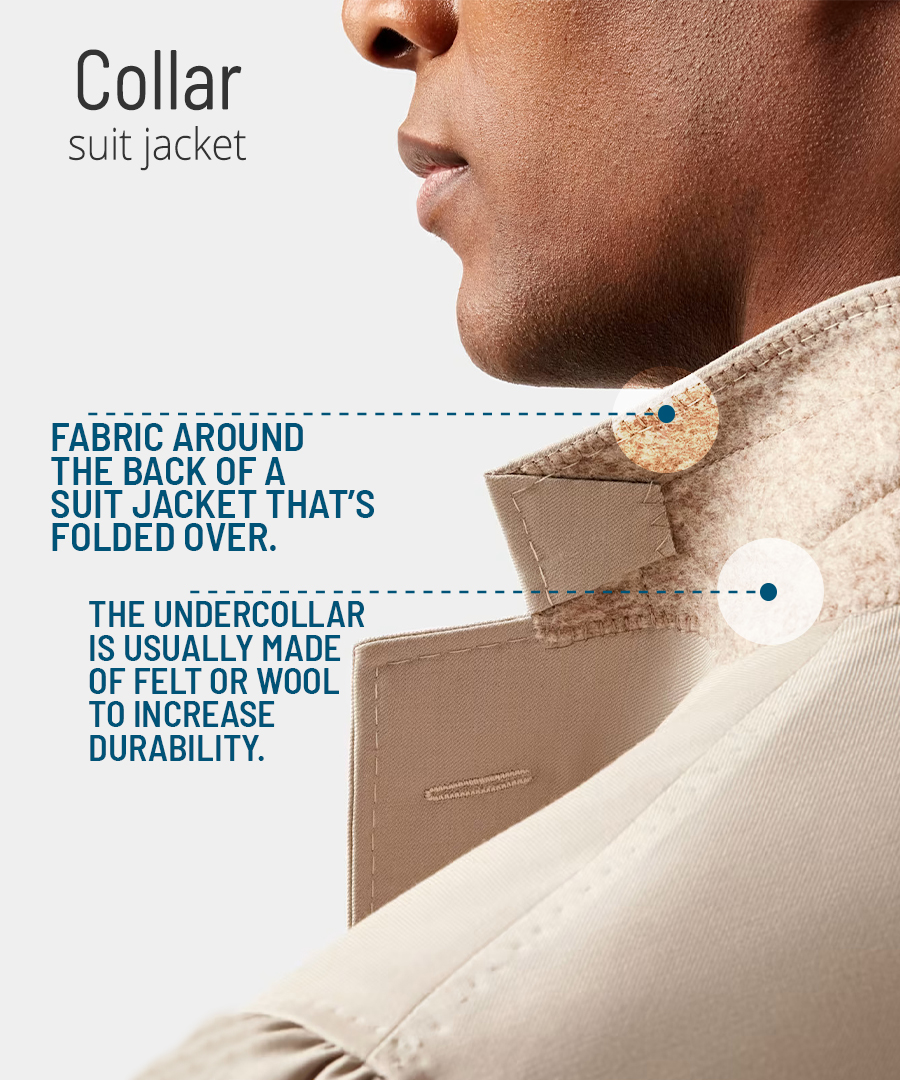
When touching the jacket, you can do a pinch and lapel test. Pinch the fabric below the bottom button and gently pull the layers apart.
It is a canvas suit if you feel a third layer floating between the inner and outer fabric. Compare the fabric here with the sleeve to know the difference.
Alternatively, you can pinch the lapels or look for light stitches while unfolding these. But this often requires a trained eye to figure it out.
Lastly, you can tell about the suit canvas by wearing the jacket. It might have some exaggeration, but you float like a butterfly wearing a canvas suit.
That’s because you can feel the inner part of the canvassed suit moving with you.
Again, you must have experience wearing different jacket types to really feel the difference.
What About Fused Suits?
Fused suits represent a relatively low tailoring standard. These have a mesh material placed between the two layers of the jacket.

The exterior cloth lays on this fused mesh. When pressed, it gets glued between the two layers of the fabric.
This will be an effort to provide the structure to the jacket the same way as the canvas.
However, there is no movement within this fused cloth, and the jacket appears stiff.
Initially, with the right fit, the suit will appear somewhat decent. But over time, the fuse cloth starts to degrade.
Plus, this cloth is not as breathable. So, you have a hard time enjoying your suit a few years after you purchased it.
The dry cleaning process can expose this fusion via ripple on the jacket.
Although good technology can avoid it, it becomes almost inevitable after 3-4 years.
Compared to canvassed ones, fused suits are affordable because manufacturers are cutting a lot of costs on canvas and hours of work required to make canvassed suits.
So the benefit you enjoy is the low cost of the suit. You spend even less than one-third compared to a full canvas suit.
In return, you get a suit that immediately serves the purpose and looks presentable.

